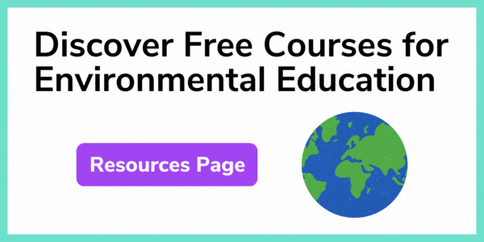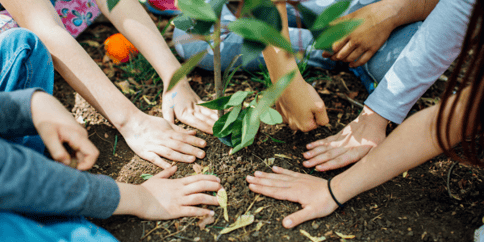Activities and Tips to Encourage Sustainability in the Classroom
by Mary Gannon on 19 Apr, 2024
Sustainability is an essential part of our everyday lives, and as such, students should be informed on the importance of sustainability in promoting a healthy environment. Bringing sustainability into the classroom introduces students to the topic of climate change and can teach students environmental literacy, interdisciplinary learning, and helps prepare them for the future.
Why Teach Sustainability?
Sustainability education encourages critical thinking, as students are prompted to analyze complex environmental problems, understand and consider multiple perspectives, and propose innovative solutions that help them become active agents of positive change in their communities and beyond.
Earth Day emphasizes the need for sustainability and is therefore a fantastic opportunity to highlight its importance and show students how each individual has an impact on climate change. Explore the video below to learn more about the history of Earth Day.
Tips for Incorporating Sustainability in classrooms
- Integrate Sustainability Across Subjects: Sustainability can be incorporated into nearly any subject, just as we have seen sustainability on the rise across industries. By integrating sustainability into everyday topics and conversations, students can see first-hand how climate change and sustainability affect nearly every aspect of our lives.
- Encourage Green Habits: There are endless ways students can positively contribute to the climate, from turning lights off to saving water, or simply walking to school. Fostering these habits among students and promoting their positive effects can help solidify the importance of individual responsibility in sustainability.
- Explore Technology: Use technology as a tool for exploring sustainability topics through virtual field trips, digital storytelling, or online collaborative projects.
- Encourage Reflection and Action Planning: Students can reflect on their learning and brainstorm ways to incorporate sustainable practices into their daily lives. This reflection can also help students develop action plans for reducing their ecological footprint and making positive contributions to the environment.
Sustainability Activities for the Classroom
Teaching students the effects of climate change and the importance of sustainability can be daunting, however, it can also empower students to take action once they have the knowledge and resources they need to succeed.
- Field Trips: Studying sustainability at school is the first step to teaching and promoting sustainability, but field trips take this one step further. Students can be pushed in a new environment to think differently and apply their knowledge and skills.
- Guest speakers: Guest speakers offer new and fresh ideas that give students different perspectives on the topic of climate change and sustainability. This is essential as students can use varying opinions and insights to form their own mindset and approach towards sustainability.
- Bring Activities Outside: Bridging the gap between classroom instruction and real-world application is essential to promote sustainable action among students. Exploring sustainability outside gives students hands-on learning opportunities and a connection with the natural world.
- Art and Creativity: Use recycled materials or reuse and repurpose old waste to create new projects and give products a second life. In doing this, students are being exposed to sustainable materials and are playing an active role in reducing, reusing, and recycling.
Resources and Tools for Sustainability
- Encourage Engagement Beyond the Classroom: Encouraging engagement beyond the classroom starts in the classroom! EcoSchools Canada provides educational resources on sustainability and promotes climate action opportunities, including waste reduction programs, energy conservation projects, and community clean-up events. Educators can foster connections between students, their communities, and real-world issues to promote climate action.
- ChatterHigh: Provides online resources for educators to find sustainability curriculum materials. Students can engage in climate change education and action through Environment Canada’s Nature-based Climate Solutions course or through the New Brunswick Climate Action Education modules.
- Tools to Inform and Engage Students: The government of Canada has a comprehensive list of resources to inform students about climate change and encourage their thinking through active-learning activities.
- Ecological Footprint: A carbon footprint is the total amount of greenhouse gases that are generated by our actions. Calculating this number can give students an idea of their personal environmental impact, how they compare to their peers and others across the world, and what areas of their life have room for sustainable adjustments.
Conclusion
Sustainability is an important topic that students will continue to encounter throughout their lifetime. This is why cultivating a mindset of curiosity, empathy, and action that inspires students to become lifelong learners is beneficial not only to students, but to the planet. Teaching sustainability in schools fosters environmental literacy, ethical consideration, and critical thinking skills, empowering students to become active agents of positive change in their communities and beyond.


